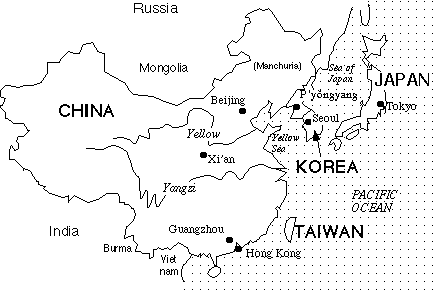

Figure 1-1. East Asia (not to scale) showing the geographic relations among the areas covered in this book: China, Korea, Japan, and Taiwan. Guangzhou is known also as Canton, and Yangzi (River) as Yangtze.
As the sketch map in Figure 1-1 shows, the Chinese, the Koreans, and the Japanese live in territories that differ markedly in size and characteristics but are geographic neighbors. China is a part of the great Eurasian continent and is itself a giant; Korea is a small peninsula that juts southeastward out of this continent; and Japan is a chain of islands in the Pacific Ocean forming an arc east of Korea. Two Chinese provinces in the northeast (former Manchuria) border N. Korea. Otherwise, China is separated from Korea by the Yellow Sea, and Korea from Japan by the Sea of Japan. But these separations are short; so, for example, one can fly between Tokyo, the capital of Japan, and Seoul, the capital of S. Korea, in only two hours. These geographic conditions have had a profound influence on the history and culture of the three peoples. As they say, the geography of a nation is its destiny.
Over a long history that stretches back thousands of years, the three peoples have had close relations, sometimes amicable and at other times hostile. In antiquity successive waves of Chinese refugees settled in northern Korea, and the Chinese Han dynasty established a few administrative units there. In the 13th century the Mongol ruler of China, Kublai Khan, forced the Koreans to assist in two abortive attempts to invade Japan. In the other direction, in the late 16th century, a Japanese warlord invaded Korea, with the aim of overthrowing the Chinese Ming dynasty. His death put an end to the Japanese aggression.
Near the end of the 19th century, Japan invaded China with the aim of severing Korea's dependence on China and of dominating Korea. As booty of war, Japan secured what it coveted, and as a bonus it took Taiwan from China. In the first half of the 20th century, Japan took Korea as a colony in 1910, set up a puppet regime in Manchuria (now the northeast of China) in 1932, and engulfed much of China in a full-scale war in 1937. All of these gains had to be given up in 1945 when Japan was defeated in World War II. Today the Japanese aspire to become an economic rather than a military power.